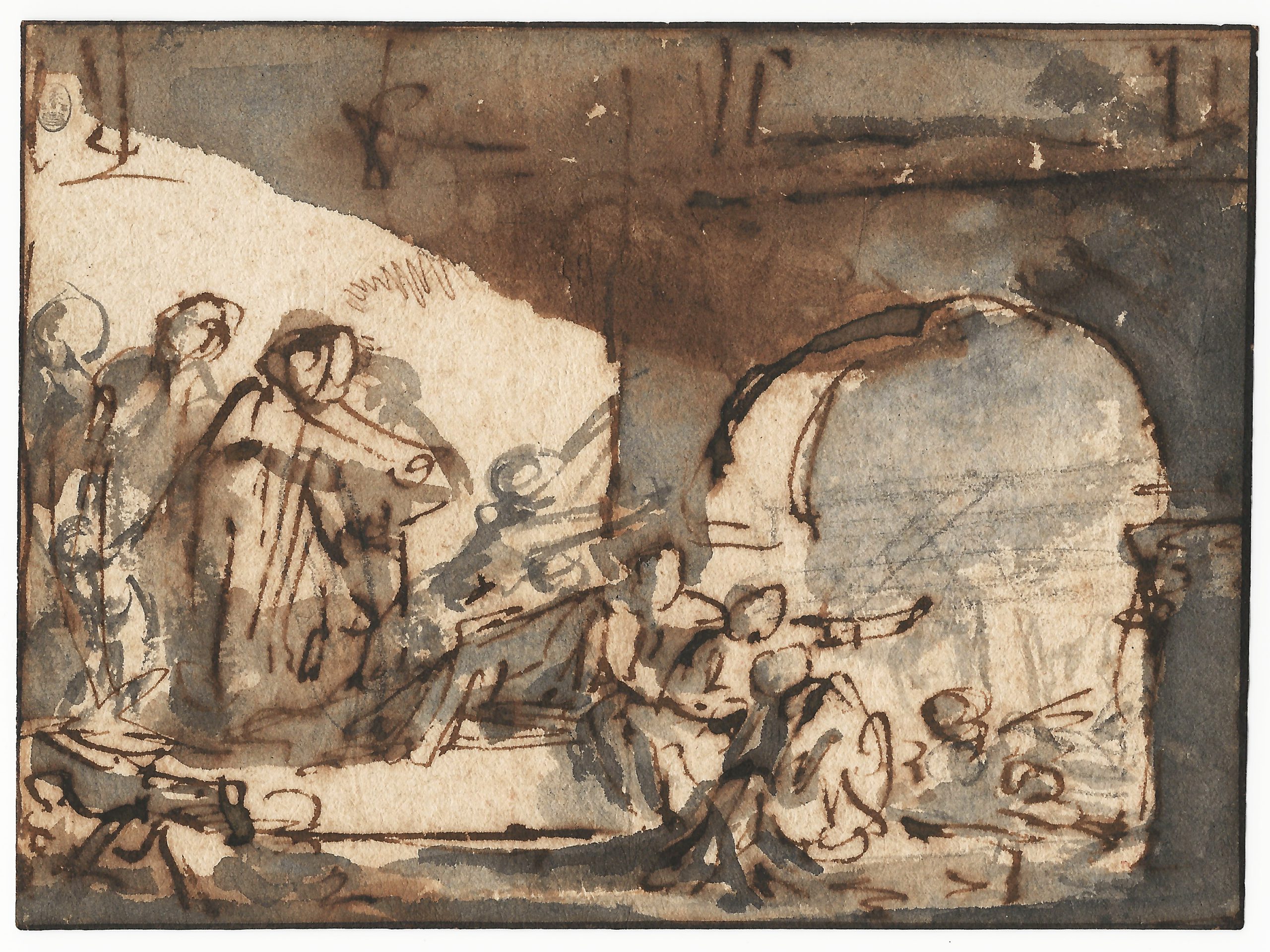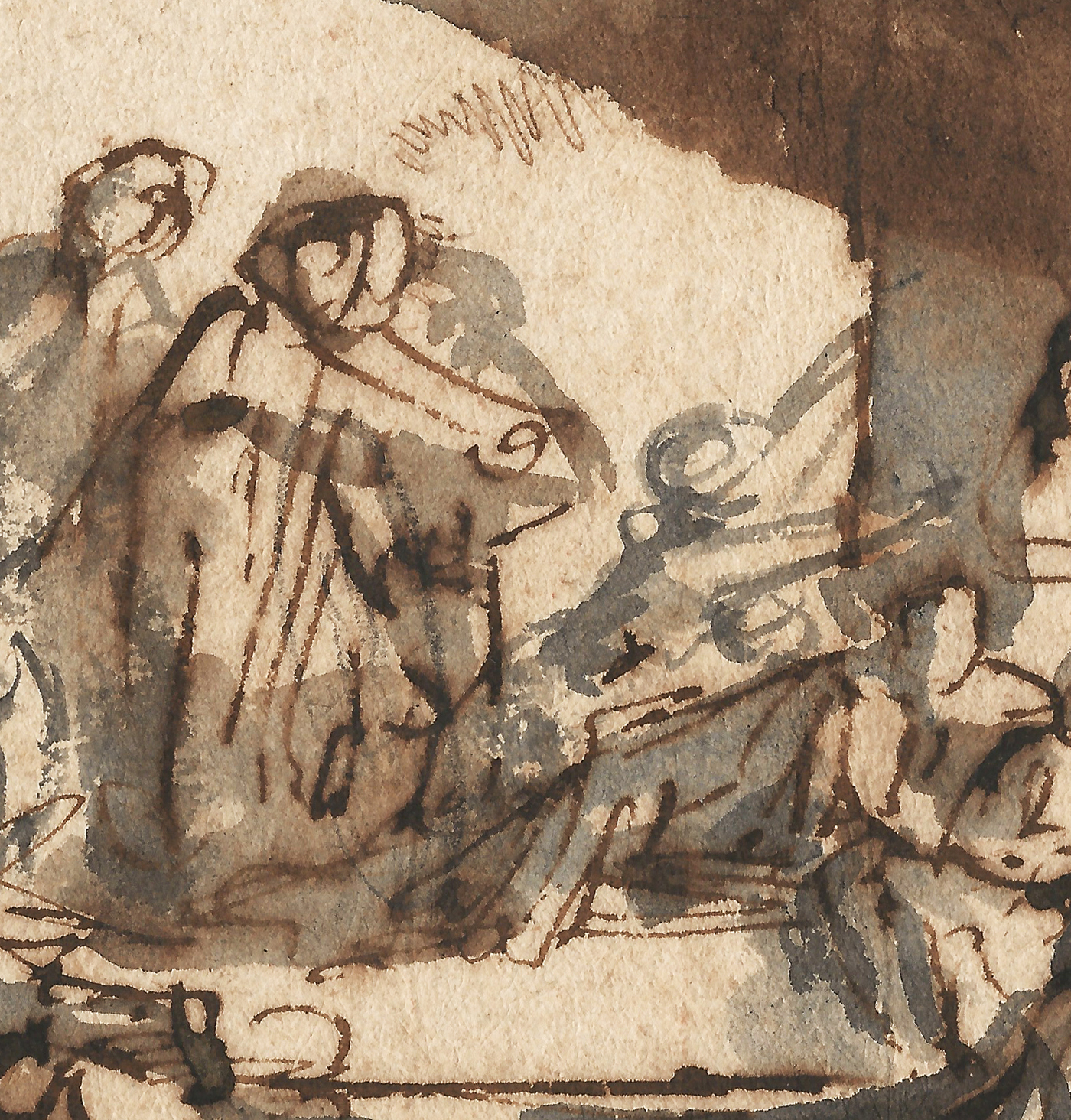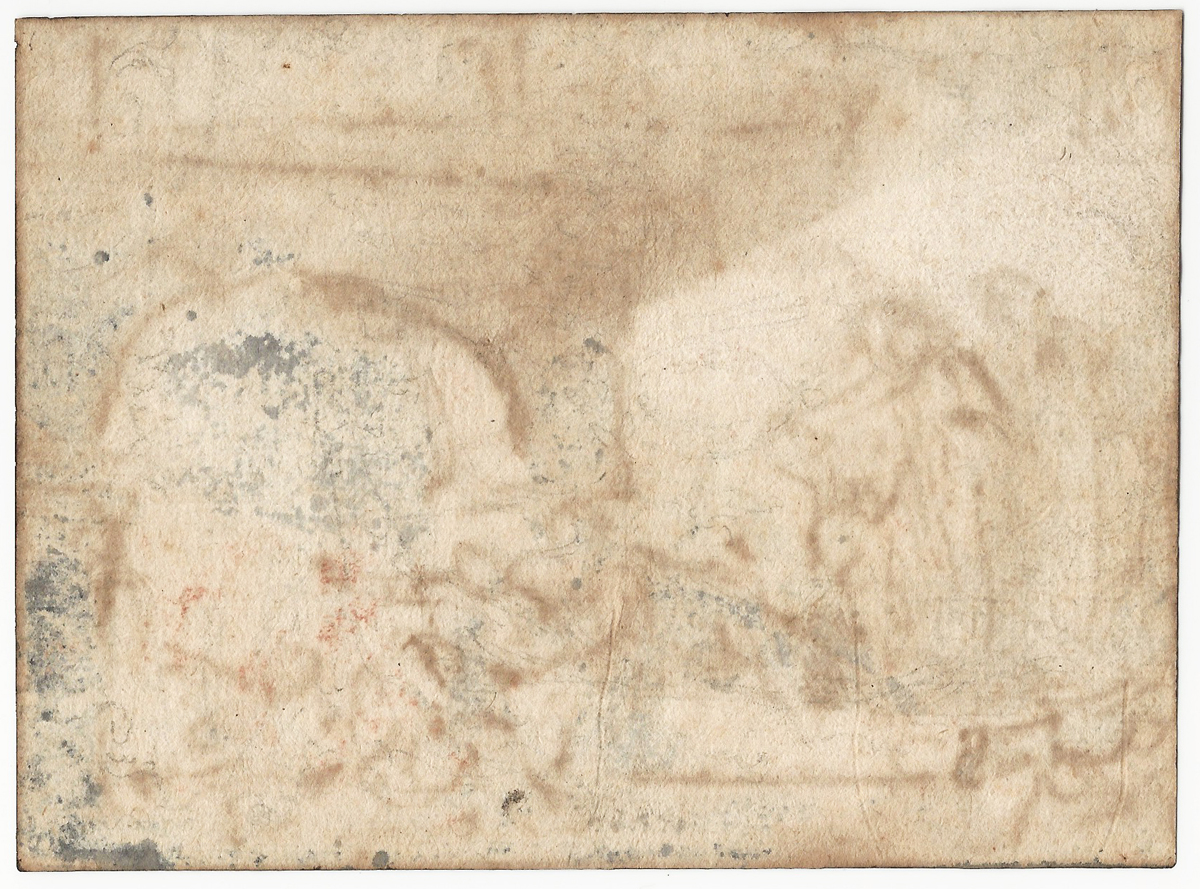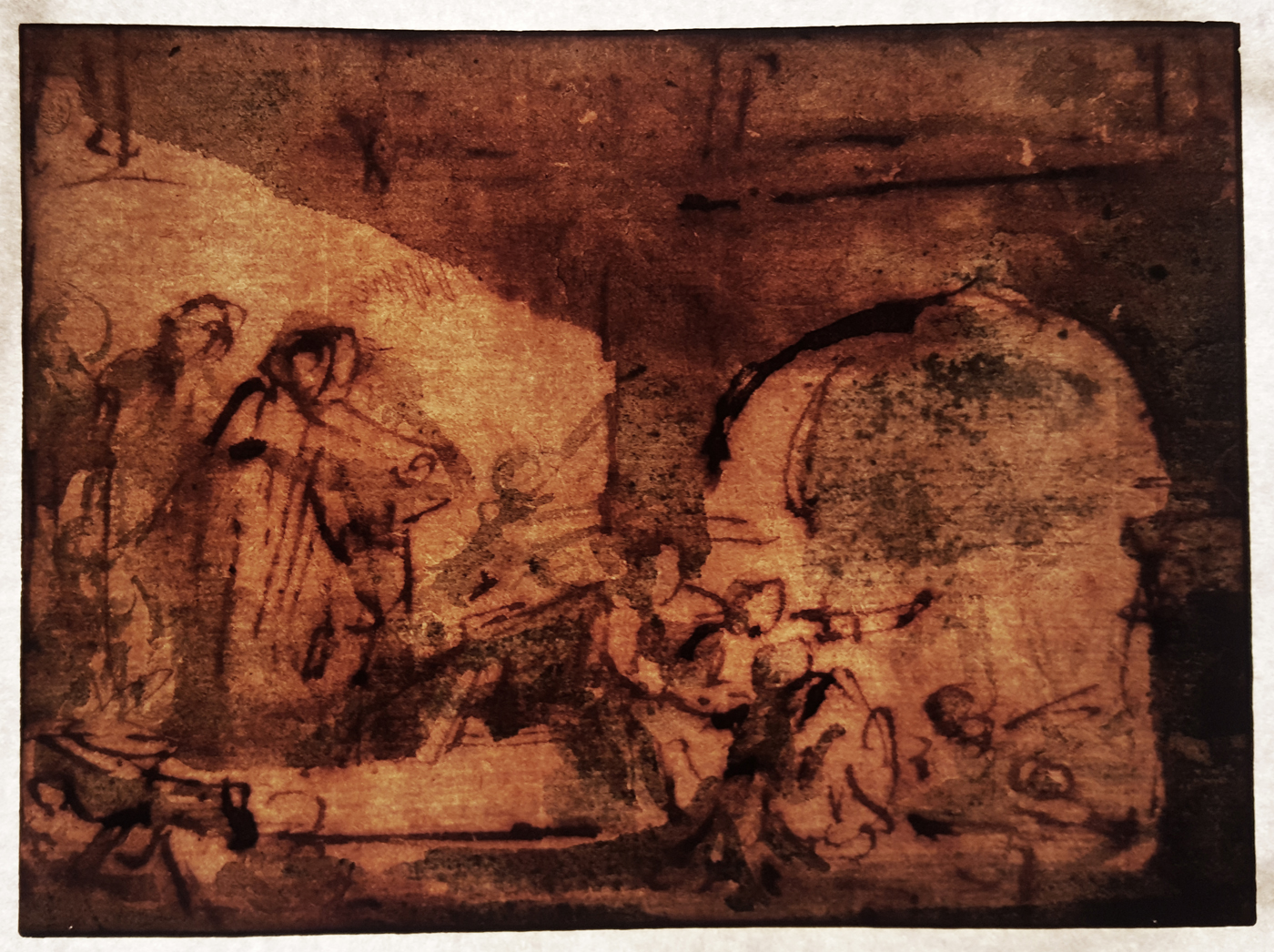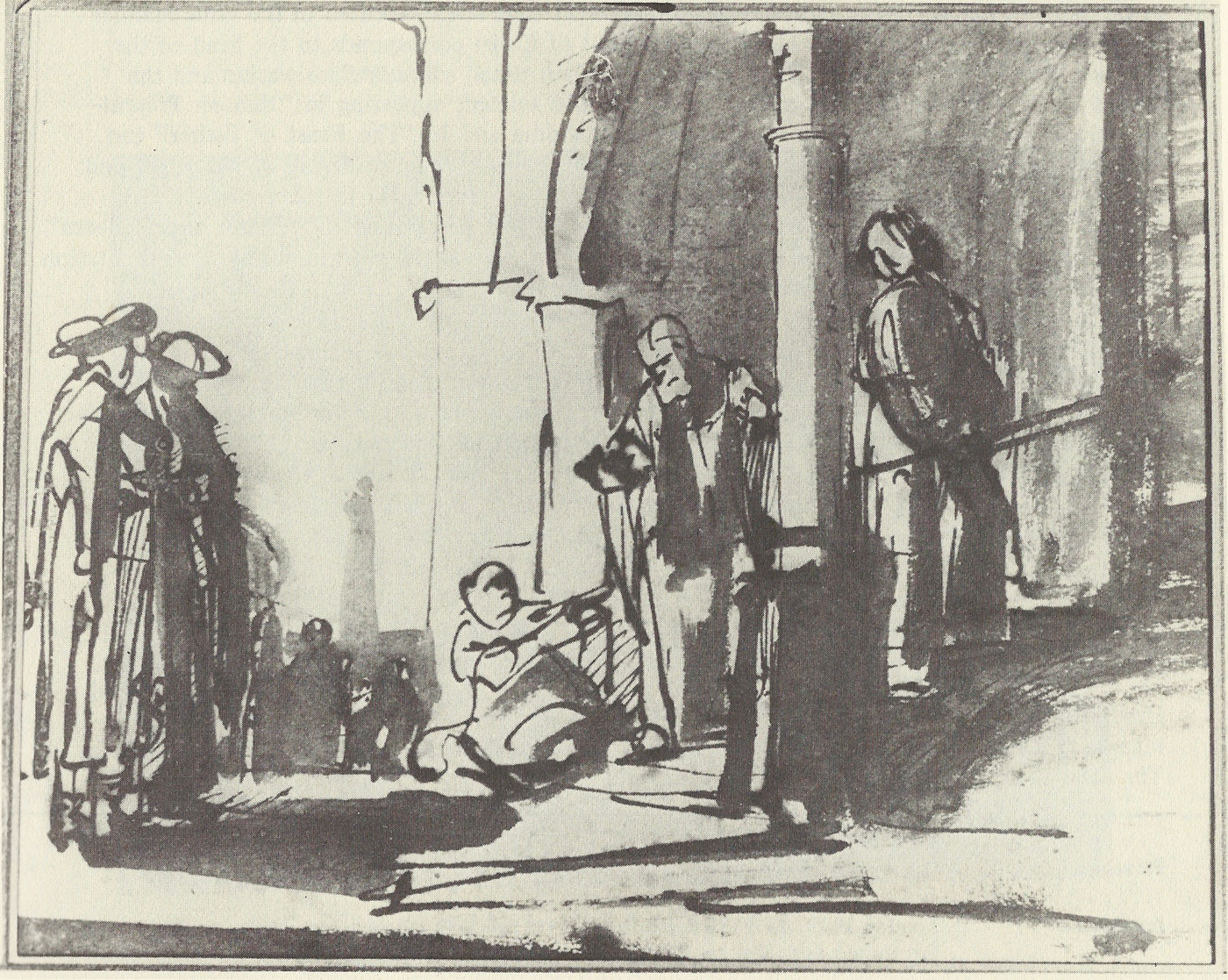REMBRANDT SCHOOL, circa 1640-1650
Rembrandt School, circa 1640-1650
Composition Study, possibly Christ Driving the Money Changers from the Temple
Black chalk, pen and brown ink, brown and grey wash, brown ink framing lines, 102 x 138 mm (4 x 5.4 inch)
Provenance
- Baron Dominique Vivant-Denon (1747–1825) (Lugt 780)
- Private collection, The Netherlands
***
This recently discovered powerful study sheet immediately recalls the drawings of Rembrandt Harmensz. van Rijn (1606-1669), the most influential artistic personality of the Dutch Golden Age. As is well known, Rembrandt’s studio attracted a host of students, pupils and collaborators, who paid annual tuition fees to the master. Drawing was enormously important to Rembrandt, whose creative thought processes can often be followed by studying his surviving drawings. Rembrandt impressed the importance of drawing upon his students, who strived to emulate the master’s drawing style as closely as possible.
Because of the number of students, the rarity of signed sheets and the dependence on Rembrandt’s own technique, it is sometimes difficult to securely attribute drawings produced in Rembrandt’s orbit – as is also the case here. Stylistically, the drawing can be dated to c.1640-1650. Although it has been executed with considerable vigour and confidence, indicating a strong artistic personality, the identify of the artist has so far remained elusive. Students in Rembrandt’s studio in this period included for instance Ferdinand Bol (1616–1680) and Gerbrand van den Eeckhout (1621–1674). Some of the latter’s drawings are executed in a similar shorthand yet painterly technique, employing multiple media, for instance Sts Peter and John Healing the Cripple (fig.).1 As is often the case with sketches by Rembrandt and his circle, it is frequently difficult to correctly identify the iconography. This also applies here, although this vigorous sketch may well be a preparatory study for a Christ Driving the Money Changers from the Temple.
This mysterious and dramatic sheet once formed part of the collection of Baron Dominique Vivant-Denon (1747–1825), first Director of the Musée Napoleon, now the Louvre – a wing in this museum is still named after him.2 Vivant-Denon had earlier accompanied Napoleon on his expedition to Egypt, and his drawings made during this tour were published in 1802 as the Voyage dans la basse et la haute Egypte, which greatly increased knowledge about Egypt. Vivant-Denon was a celebrated collector in his own right.
SOLD
1. Pen and brown ink, brown wash, 175 x 220 mm, formerly A. Strölin collection, Lausanne; W. Sumowski, Drawings of the Rembrandt School, New York 1981, vol. 3, cat. no. 763x, pp. 1646-47, repr.
2. F. Lugt, Les marques de collections de dessins & d'estampes, The Hague 1921, no. 780 and Marie-Anne Dupuy, Dominque-Vivant Denon: l'oeil de Napoléon, Paris 1999, passim.
